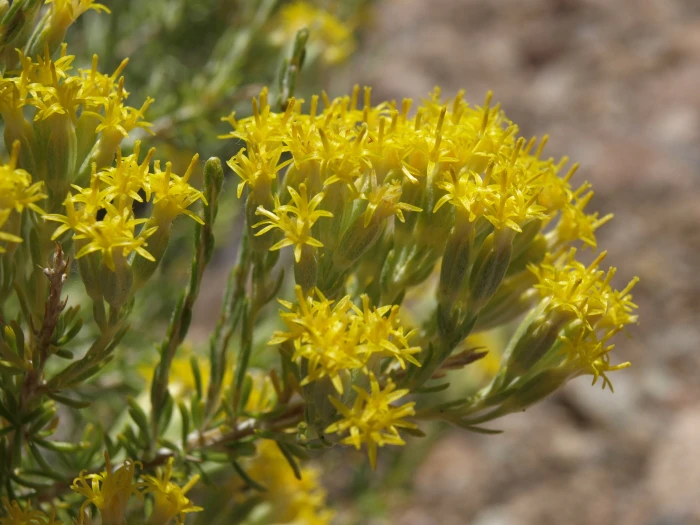Littleleaf Horsebrush
(Tetradymia glabrata)
Littleleaf Horsebrush (Tetradymia glabrata)
/
/

Jim Morefield
CC BY 4.0
Image By:
Jim Morefield
Recorded By:
Copyright:
CC BY 4.0
Copyright Notice:
Photo by: Jim Morefield | License Type: CC BY 4.0 | License URL: http://creativecommons.org/licenses/by/4.0/ | Rights Holder: Jim Morefield | Publisher: iNaturalist | Date Created: 2008-06-12T14:13:58-07:00 |

























Estimated Native Range
Climate Requirements for Kearney, Nebraska
| This Plant | Your Site | Plant Suitability for Your Location | ||
|---|---|---|---|---|
| • Precipitation | 3" - 22" | 25" | Your precipitation may be too high for this plant. | Too high |
| • High Temp. | 70°F - 103°F | 89°F | Your summer temperatures are normal for this plant. | Excellent |
| • Low Temp. | 8°F - 36°F | 12°F | Your winter temperatures are normal for this plant | Excellent |
This plant may not grow well at your location - your precipitation is too high.
Summary
Tetradymia glabrata, commonly known as Littleleaf Horsebrush, is an erect, bushy shrub native to arid regions, including the Great Basin and Mojave Desert in the western United States. It is typically found in sagebrush communities, pinyon-juniper woodlands, and desert scrub habitats. This shrub can reach over one meter in height and is characterized by its white woolly stems and narrow, pointed leaves that are usually no longer than a centimeter. During its flowering season, which occurs in late spring to early summer, Tetradymia glabrata produces inflorescences bearing up to seven flower heads, each with four yellow cream flowers that are modest in showiness.
Littleleaf Horsebrush is valued for its drought tolerance and ability to thrive in poor, well-drained soils, making it suitable for xeriscaping and naturalistic plantings in arid regions. It is also used for erosion control due to its deep root system. However, gardeners should be aware of its toxicity, particularly to livestock such as sheep, as it contains harmful compounds like furanoeremophilanes. It requires minimal maintenance once established and prefers full sun conditions. Despite its benefits, caution is advised when planting near grazing areas due to its toxic nature.CC BY-SA 4.0
Littleleaf Horsebrush is valued for its drought tolerance and ability to thrive in poor, well-drained soils, making it suitable for xeriscaping and naturalistic plantings in arid regions. It is also used for erosion control due to its deep root system. However, gardeners should be aware of its toxicity, particularly to livestock such as sheep, as it contains harmful compounds like furanoeremophilanes. It requires minimal maintenance once established and prefers full sun conditions. Despite its benefits, caution is advised when planting near grazing areas due to its toxic nature.CC BY-SA 4.0
Plant Description
- Plant Type: Shrub
- Height: 1.5-3 feet
- Width: 1.5-3 feet
- Growth Rate: Slow
- Flower Color: White, Yellow
- Flowering Season: Spring, Summer, Fall
- Leaf Retention: Deciduous
Growth Requirements
- Sun: Full Sun, Part Shade
- Water: Low
- Drainage: Fast, Medium
Common Uses
Drought Tolerant, Erosion Control, Low Maintenance
Natural Habitat
Native to sagebrush communities, pinyon-juniper woodlands, and desert scrub habitats
Other Names
Common Names: Smooth Tetradymia, Cottonthorn, Spring Rabbitbrush
Scientific Names: Tetradymia glabrata, Tetradymia glabrata f. calva, Tetradymia glabrata f. glabrata
GBIF Accepted Name: Tetradymia glabrata